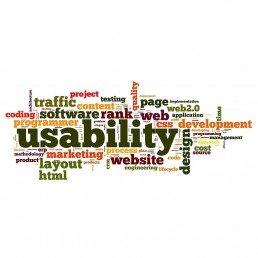Usability Rules and Principles for Websites
We all now that nowadays there are some well known standards when creating a new web application: it must support a big number of users, no errors on loading, it must be responsive and clear. Beside those, every website must have a user-centered design and to have that, here are some rules and principles for usability.
Usability Rules and Principles for Websites
1. 7+-2 Principle
– there must be 7+-2 elements in a navigation bar
2. 2-Second-Rule
– a user shouldn’t wait more than 2 seconds for a response from the server
3. 3-Click-Rule
– if a user cannot access a site functionality or the information in 3 clicks, he will leave the site (this underlines the necessity of having a clean navigation, a logical structure and a simple to follow site hierarchy)
4. Shneiderman’s rules for design
a. Consistency
– consistent sequences of actions should be requested in similar situations
– the same terminology should be used in prompts, menus, help windows
b. Informative feedback
– for every action there should be a feedback system. For minor and frequent actions the response can be modest, and for major and rare actions, the response should be substantial
c. Closure dialogs
– action sequences should be organized in groups with a beginning, middle and an end
d. Easy handling of errors
– the user shouldn’t be allowed to make serious errors
– if an error is produced, the system should be able to detect it and to offer an easy to understand mechanism for treating it
e. The system should permit action canceling
5. Banner-Blindness
– users tend to ignore colored and animated banners, same for other graphic elements
– the focus is moved to the text and hyperlinks
6. Users should be allowed to test a functionality without authentication
– to continue using the functionality, users would be more than happy to fill in a form
7. Registration form
– filling should last about 30 seconds
– if there are too many fields and the user must scroll, horizontal alignment can be a solution
– [Labels] because the forms are vertically oriented (users fill the form from top to bottom), the input label is indicated to be placed above
– [Search box] the ideal width of a search box is 27 characters
– ‘Submit’ button should be either left aligned or centered
– it's better not to name a submit type button “Submit”, but the actual action that is done when the form is sent, for example: 'Create Account', 'Subscribe Now', 'Send Message', 'Register Free'
8. Text
– it's appropriate to use within 3 typefaces in three sizes
– for a natural result you can choose the font size value for the body from the Fibonacci series (16-24-40-64-104)
I hope these rules help you become a better web developer! Good luck :)
10 Awesome CSS Tips and Tricks
This is a collection of CSS tips, tricks, and fixes, or whatever you want to call them, that I stumbled upon along the way. I have to say from the very beginning that you can find most of these, if not all of them, familiar. On the other hand, I really hope that some of you might learn something new from this post. So let's begin.

